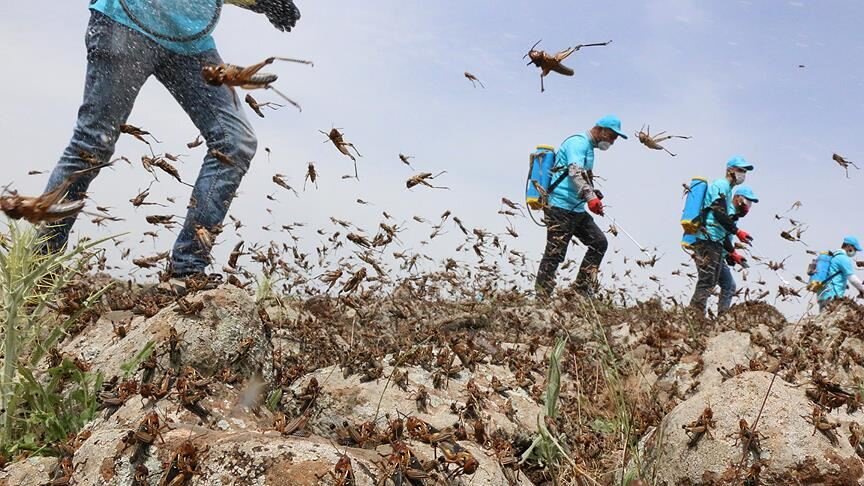Military to help battle locusts in Iran

TEHRAN - The Iranian agriculture ministry has called on the military to help fight locusts that have invaded the south of the country, threatening to destroy crops.
Mohammad Reza Mir, a spokesman for the agriculture ministry's Plant Protection Organization, said the desert locusts had attacked more than 200,000 hectares of orchards and farmland in seven of the country’s 31 provinces, ILNA reported.
"The military have promised to help fight the desert locusts, including by providing all-terrain vehicles for use in areas which are hard to access," Mir told ILNA.
"Last year the military provided personnel and vehicles, and that was a big help."
The affected areas, stretching from eastern Iran on the border with Pakistan to the south-western border with Iraq, were likely to soon increase to 1 million hectares, he added.
Plant Protection Organization's head, Mohammad Reza Dargahi, said last month that locust swarms threatened billions of dollars' worth of agricultural products across six provinces in southern Iran.
On March 19, the Food and Agriculture Organization of the United Nations (FAO) signed an agreement to provide Iran $200,000 for capacity building to control desert locust infestation.
“Given the alarming situation of desert locust in the region and the possible huge damages this pest can cause in agricultural production and rural livelihoods, FAO determined to further extend its technical assistance to Iran, and accordingly allocated additional funds to this project,” said FAO Representative to Iran, Gerold Bödeker.
He added that “As part of the agreement, FAO will also assist the country in procuring vital equipment needed to equip two desert locust control centers that will allow a quicker and more effective response.”
Last year, desert locusts penetrated into the provinces of Bushehr, Fars, Hormozgan, Kerman, Khuzestan, and Sistan–Baluchestan, which resulted in major losses on over 500,000 hectares of farmlands and gardens.
FAO explains that desert locust infestations are normally present in southeast Iran during the spring. Local breeding coincides with seasonal rains that often occur from about February or March until April or May. In warmer years, rains that occur during the winter can lead to late winter and early spring breeding.
MG
